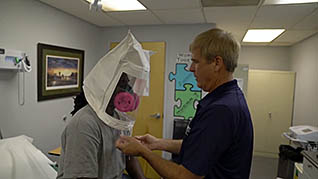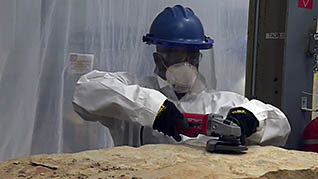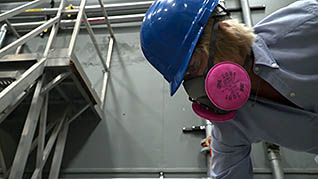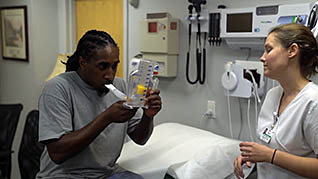Breathe Safely: The Proper Use of Respiratory Protection (Concise Version)
- Product ID
- erisbspuc_vod
- Training Time ?
- 9 to 18 minutes
- Language(s)
- English,Spanish
- Video Format
- High Definition
- Required Plugins
- None
- Number of Lessons
- 10
- Quiz Questions
- 9
- Closed Captioning
- Question Feedback
- Wrong Answer Remediation
- Lesson Bookmarking
- Downloadable Resources



There are a number of respiratory hazards workers can be exposed to that could lead to lung damage, cancer or other serious health conditions. The training focuses on teaching employees to understand the respiratory hazards they may encounter in the workplace and how to use the proper respiratory protection to prevent exposures to such hazards.
This course demonstrates how a worker’s health is evaluated, and how a fit test is administered. There are different types of respirators and it is important workers receive training to understand what type they need. This course explains the efficiency ratings and classes of filter respirators. Workers also need to continually change filters and cartridges, as well as clean and sanitize their masks after each use. This course covers the best practices for user seal checks, cleaning, disinfecting and storing respirators.
Use this concise course to help ensure your workers are breathing safely thanks to the proper use of respiratory protective equipment.
![]() This course is in the Video On Demand format, to read about Video On Demand features click here.
This course is in the Video On Demand format, to read about Video On Demand features click here.

- Full-screen video presentation
- Print certificate and wallet card
- You have 30 days to complete the course
Anyone required to wear respiratory protective equipment
- Introduction
- Medical Evaluations and Fit Testing
- Assigned Protection Factors (APF’s)
- Different Classes of Filters
- Types of Respirators
- Chemical Cartridge Respirators and PAPR
- Proper Use of Respirators
- Protection in an IDLH Atmosphere
- Cleaning Disinfecting and Storing Respirators
- Conclusion
© Mastery Technologies, Inc.




